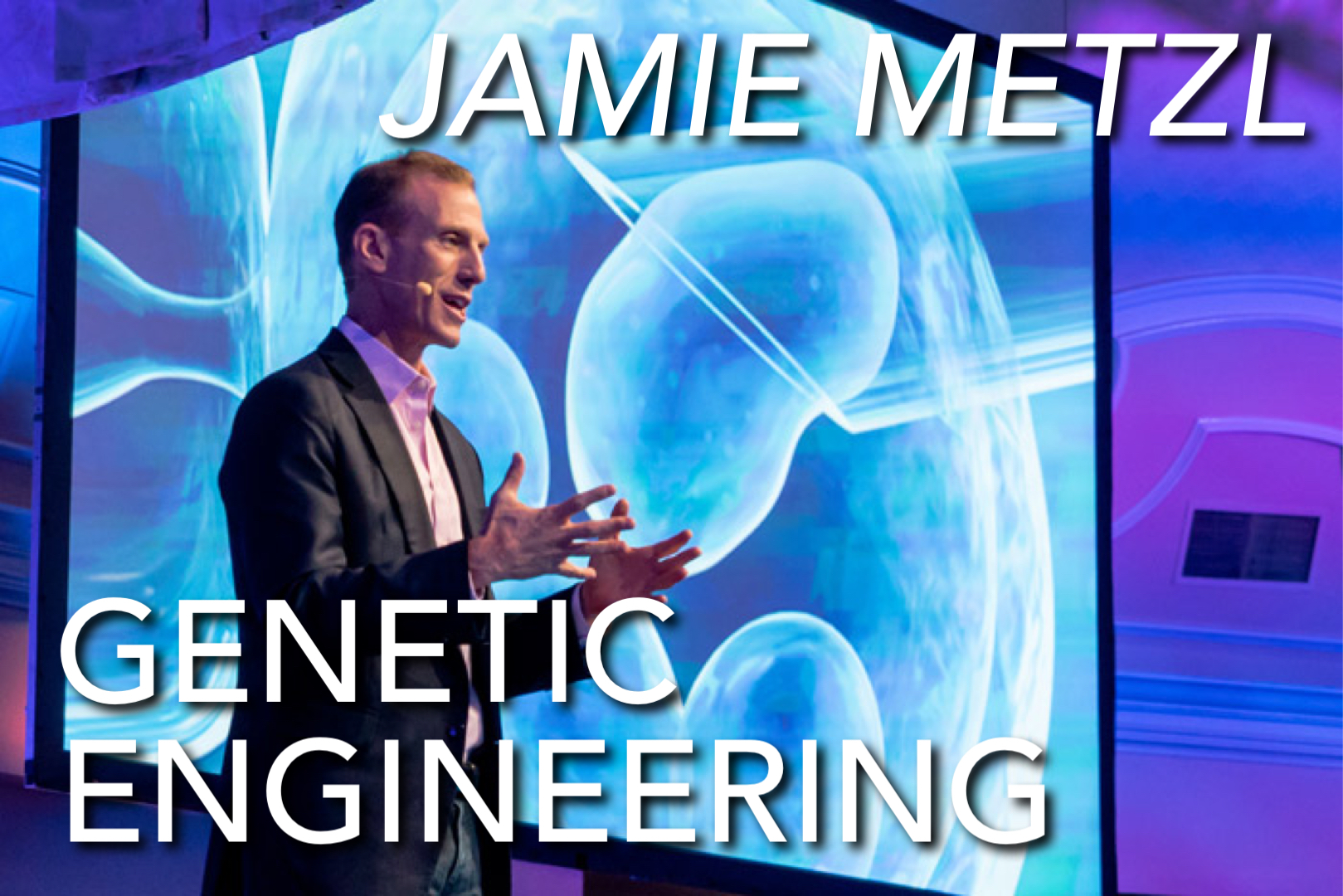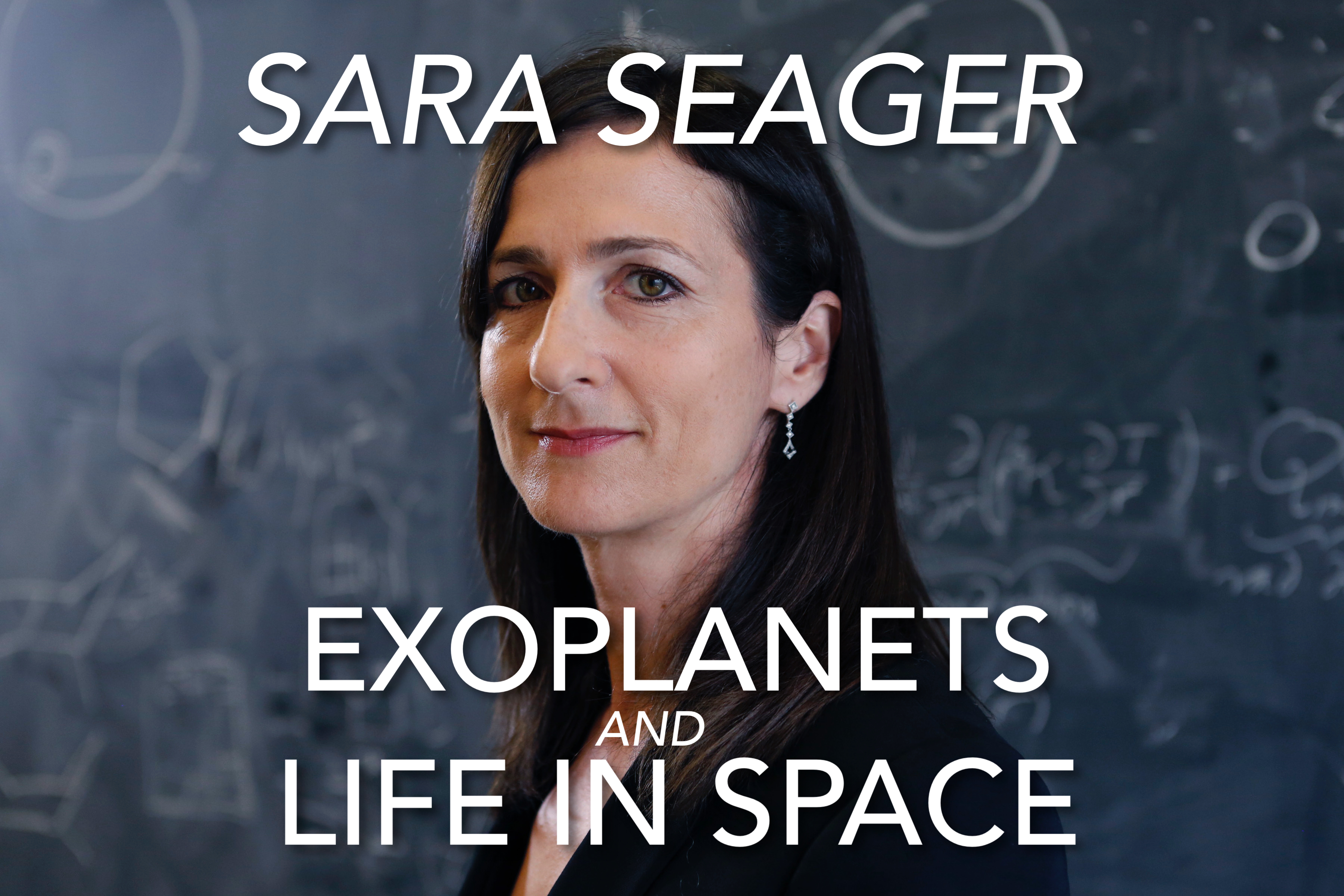Cover photo: Válasz Online/Barna Borbás
This interview was conducted in December 2021 and has been edited for brevity and clarity.
About Eörs Szathmáry
Eörs Szathmáry is a Hungarian theoretical evolutionary biologist at the Institute of Evolution in the Centre for Ecological Research as well as the Eötvös Loránd Research Network. His interest in theoretical biology and further on his career, was greatly influenced by his mentor, the distinguished Tibor Gánti. After finishing his Ph.D., Szathmáry got the chance, thanks to a George Soros fellowship, to travel to the UK where he met with the renowned John Maynard Smith. The two had a common passion for theoretical evolutionary biology and wrote together the landmark book The Major Transitions in Evolution (1995). The book had a tremendous impact, primarily within the field of biology but surprisingly enough, also in other fields such as finance, economics and theoretical physics. The intended audience of the book was well-informed biologists, but due to the great interested by others, Szathmáry and Maynard Smith wrote a popular version of it a few years later – The Origins of Life (1999). Eörs Szathmáry serves today on the editorial board of several journals and he has been awarded multiple times for his scientific achievements.
Revised theory of Major Evolutionary Transitions
20 years after the publication of The Major Transitions in Evolution (1995), Szathmáry updated the list of major transitions of evolution in the paper Toward Major Evolutionary Transitions Theory 2.0. This was an attempt to reach a more proportionate structure of the theory by reclassifications of some of the transitions and introduce distinct phases. The major transitions of evolution are the origins of:
1.. Protocells
2. Genetic code and translation: prokaryotic cells;
3. Eukaryotic cells
4. Plastids
5. Multicellularity (plants, animals, fungi)
6. Eusocial animal societies
7. Societies with natural language.
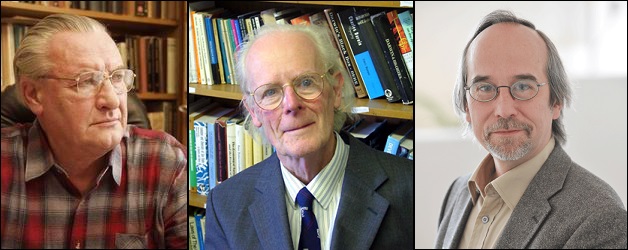
How would you explain to someone what you mean with a major evolutionary transition?
– Evolutionary events happen every day, for example when one gene variant replaces another gene. We call those events microevolution. But what we are talking about here are the limited number of events where two different, major things happen and go hand in hand. The first one is the creation of a higher level evolutionary unit from lower level units. They somehow come together and then at a later stage we have an agent that is now in the focus of natural selection, and not their parts. The second thing is inheritance. We realized that the inheritance system also changes, for example when the genetic code appeared and was translated into proteins, or the epigenetic inheritance by which not only the gene sequences are inherited but also the state of the gene, whether it is switched on or off. Language became a cultural inheritance system with biological foundations, by which we got able to explain things to the next generation. All of these are obviously radical changes.
With these two dimensions of major transitions, the forming of a higher level unit and the change of the inheritance system, there are probably evolutionary milestones that many would guess classifies as major transitions but actually do not, for example when the first sea creatures walked on land?
– Correct. It is of course a spectacular achievement in evolution and it includes what is called evolutionary novelties. Nevertheless, major transitions are even more radical things. It really goes to the heart of how you reproduce and how you inherit. These are the two things you need for evolution. Every major transition requires innovations, but not every innovation is a major transition.
“By posing a clear question, we are already increasing the amount of information by reducing the uncertainty.”
Let’s start with the first major transition, the origin of life itself. Will we ever know how it happened?
– Well, we don’t know how it happened, so we could finish the conversation with that. But it’s not that simple. Instead of saying that I have no clue of how life originated, I can say that I don’t understand A, B and C, but if I understood A, B and C, I will have understood how life originated. These are two very different statements. By posing a clear question, we are already increasing the amount of information by reducing the uncertainty. We know what it is we want to know. Today, we know much better what we don’t know compared to 30 years ago, and that’s a great advancement even if it might not seem to be. By asking pointed, sharp questions, we can do better experiments.
– When will we be sufficiently satisfied with what we know? There was no one there to witness the process, so nobody will ever know for sure. But as the famous chemist Albert Eschenmoser said: the maximum you can achieve is to have a statement saying how it could have happened, with which everybody agrees. What we are doing is a historical reconstruction to find a consistent scenario. If everybody agrees that the scenario is consistent and that we can account for the critical steps in the scenario in terms of mathematical models or crucial experiments, then we can say that it may have happened like this and it’s credible. By that point the job is done. That is the maximum anybody can achieve with this particular question.

Do you think life has occurred one time on Earth, or several times independent of each other?
– I think that if it happened here on Earth, it must have been the case that several living systems originated in different localities. But we are talking about very, very primitive systems. Not something complex like bacteria, with their own genetic code. It would instead have been minimal systems, as Gánti would have said. They must have had some form of molecular inheritance, a metabolic machinery to transform matter and energy for their own benefit, and some sort of bag so that the constituents don’t float apart in the ocean. That kind of minimalistic triple system is what we are looking for.
– There is a term I coined, infra-biological systems. These are more complex that usual chemical systems, but simpler than the triple system we just discussed. For example, you can put a metabolic machinery into a growing compartment, but without any genetics in it, and it will reproduce and metabolize. Gánti foresaw this already in 1978 and he actually portraited this system that would only have metabolism and compartmentalization, but no genetics, as a simple version. Now in 2022, four decades later, we are in the position of actually demonstrating something like this. It’s not like modern science necessarily paces at an incredible speed. That’s an important lesson.
“The computer virus is evolving but is no living system and the mule is a living system but is not evolving.”
In order to investigate the origin of life and to look for the most minimal living system, we need to have a clear definition of what life is, which is not a simple problem to solve, right?
– Definitely not. A definition doesn’t make predictions, it’s just an arbitrary mental construct. But different definitions have different fitness in cultural space. A definition can be useful because when people think in those terms, it leads them to interesting thoughts and ideas. Bad definitions are infertile. This is why definitions matter. Even if definitions are arbitrary, their consequences are not.
– It is useful to make a distinction between life and a living systems. Life is understood as the whole process whereby living systems are appearing and disappearing. I see life as an umbrella that includes all of that. When making this distinction, you immediately realize that what is important for evolution is not necessarily important for a particular living system. For example, a mule is not going to have offspring. From a point of evolution it’s a dead end. You cannot sustain a biosphere by putting 10 million mules into it because after some time there will be no living system left. But that doesn’t mean that the mule is not a living system.
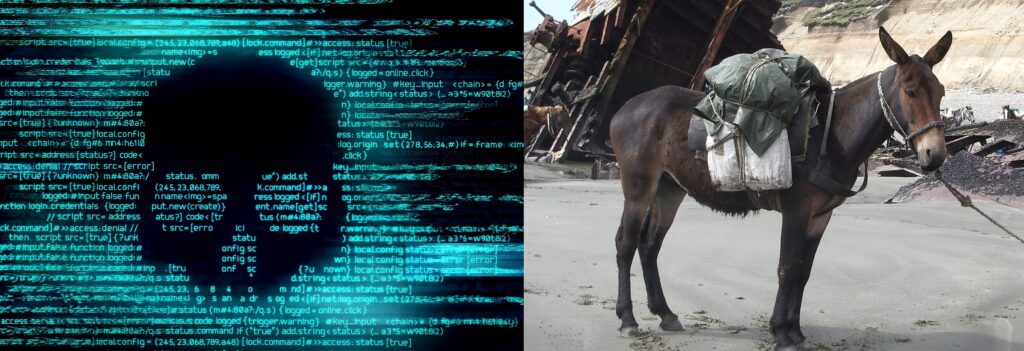
– Gánti made the distinction between life and living systems very early on. He said that you have criteria for living systems, and then there are also criteria that allow living systems to produce and maintain a population. The NASA definition of life has an evolvability element in it. I make a distinction between units of life and units of evolution. There is a big overlap of these two, but it’s not complete. You can create viruses in the digital world and some of them are genuinely evolving, but I wouldn’t call them living systems. So, the computer virus is evolving but is no living system and the mule is a living system but is not evolving.
What criteria is a computer virus not fulfilling, in order to be called a living system?
– A living system must have metabolism. A computer virus doesn’t have that. The computer, in which the virus operates, consumes energy of course, but you cannot say that this piece of energy has been taken up by the virus. By the same token, biological viruses are not alive either. A virus is essentially a program that says make several copies of me. A cell is alive by itself, and the virus needs the cells because it doesn’t do anything by itself. It is analogous to the computer virus being a program that is being fed into the computer, saying “Copy me!”. The selfish virus can achieve nothing without the host cell, which is analogous to the computer.
“Our cooperation capabilities are really being put to the test now with challenges facing us like climate change and we don’t know yet whether these capacities are strong enough or not.”
In your book you recognize cells coming together to form multi-cellular organisms as a major evolutionary transition. How do you view bees coming together to create a beehive? Some would call the hive a superorganism. Do you see that as a major transition?
– Definitely. The origin of social animals is actually being discussed in the 1995 book already. The origin of animal societies is one of the canonical transitions and it also requires the use of epigenetics. Whether a bee becomes a queen or a worker bee depends on the diet and not on the genetics. It’s an influence and the developmental pathways go different ways, so this diet influences the regulation of the genes. I think it’s legitimate to look at a beehive as a superorganism. Beehives metabolize. They have to see to it that there is ventilation because they can die of overheating. Many of the problems you have in a major city, you also have them in a termite mount or a beehive. This is taken care of by an organization in which typically, all the individuals are rather closely related to each other, and that helps.
– If we think about an individual bee; how does it pay to become a worker and not a queen? She’s not going to reproduce. So why do you give it up? At first sight you might think that the application of contraceptives was spreading by Darwinian evolution, and that can’t be right. Darwin was really smart. He suggested the possibility that the focus of natural selection is not the individual but the family. So if there is one family where there are workers that don’t reproduce but contribute to the family’s survival, that family might become more successful than where you don’t have this reproductive division of labor. And that’s exactly the explanation.
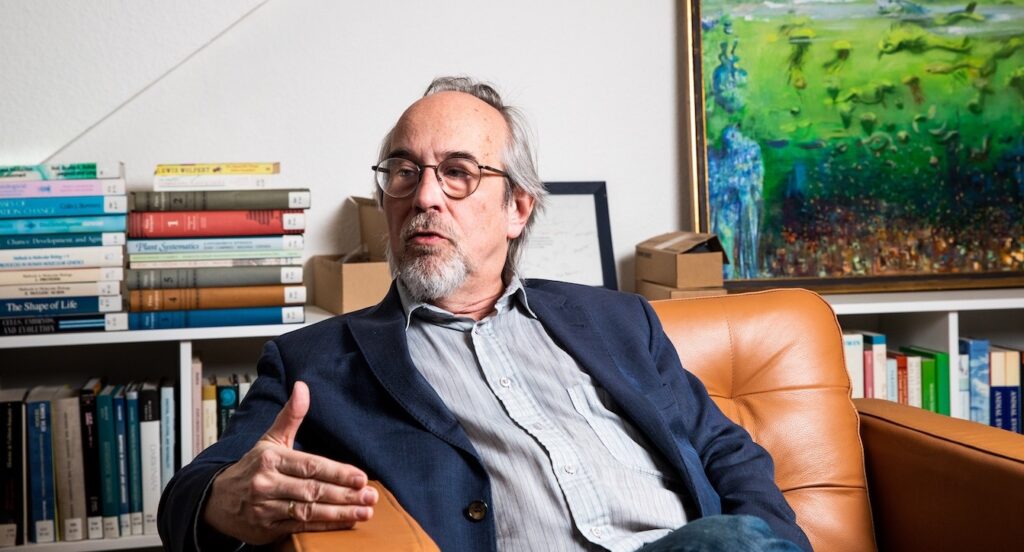
So a major difference when we compare beehives with human cities is that in a city we organize without being closely related to each other?
– Absolutely, this is a crucial and big difference. Evolutionary biologist David Queller wrote a highly appreciative book review in 1997 and the title was Cooperators since life began. These transitions require cooperation one way or the other. Without cooperation the higher level unit would never form, or even if it did it would disintegrate. However, the human cooperation is quite unique in that we can cooperate in very large groups that are not close kin. That doesn’t happen anywhere else in the living world, only with humans. We could be called super-cooperators. Our cooperation capabilities are really being put to the test now with challenges facing us like climate change and we don’t know yet whether these capacities are strong enough or not.
Was language the critical factor enabling humans’ extraordinary capability to cooperate in large groups?
– Well, it certainly helps a lot. But it’s possible to have language and still only cooperate with your kin. Language helps the process of negotiation and this is something that Richard Dawkins, in his book The Selfish Gene (1976) emphasize, that memes are such a potent new level of evolutionary agents in our society and by the cultivation of the right memes we are able to down-regulate tendencies of selfish genes. That’s the only way we might succeed in the long run if you ask me. If you cannot down-regulate individual greed of families or small groups, then we are doomed! Because we have screwed up the environment to such a degree that if it continues in the same direction, we are definitely facing an implosion. The ecological footprint of humanity is now over 150% of the Earth. If somebody thinks this is sustainable, that person is completely barmy.
“Colonization of space is an interesting topic. I believe it will happen if we manage to survive. But it’s not going to save us in the short run, no matter what Elon Musk says.”
– Let me continue with an important digression here. We would expect something like evolution to occur in at least some of the planets where life exists. We would also expect it to have undergone major transitions that are similar – not identical, but similar to the transitions that happened here. This brings us to Fermi’s question: so where are they? Fermi and his colleagues figured out that one of the possible, but not very cheerful explanations, is that the average life time of technological civilizations is very short – so they never meet. Civilizations grow, develop and then they screw up their own living conditions resulting in reversion. That doesn’t mean that they die necessarily, as a population, but it can very well mean that what they are worried about after such a collapse is again what to eat the next day.
– The problem is that this might be irreversible. The civilization might not be able to do the jump back, to reach the same advanced level again after having reverted. Many of the things needed for an industrial revolution are not freely accessible anymore. The easily accessible coal and iron is not there anymore for example. This is a real threat, and it is why I believe that the cooperation problem is extremely important. We are now going to be subjected to the most severe test ever in the history of life.
Let’s assume we do overcome the challenges we face so that we can continue to live and evolve. Can you share any speculations or hypothetical ideas about forthcoming major transitions in evolution?
– Besides the major transitions, there can also be limited transitions in the history of life. Limited transitions have the symptoms of a major transition, except that phylogenetically it has a limited impact, meaning they only affect a limited group of species. There will probably be limited transitions as long as life goes on. I’m not sure if any more major transitions will happen biologically, and this is because of us. We have transformed the conditions to such an extent that it may not happen.

– An interesting possible future transition is artificial living systems. They may not rest purely on chemical reproduction but they could still qualify as living systems. There will probably be conscious machines, which will be a major thing. Further down the line, I think that there will be some self-modification of humans as well. This is a very risky thing. It can go incredibly wrong, and as we all know, if something can go wrong, it will go wrong. But the question is whether everything goes wrong. For example, people who want to go to Mars soon will probably die. But if we try again and again, then sooner or later we will succeed. Colonization of space is an interesting topic. I believe it will happen if we manage to survive. But it’s not going to save us in the short run, not matter what Elon Musk says. We will successfully colonize space, once we survive here on Earth!
Something else Elon Musk is working on is the Neuralink, aiming to enhance humans with the help of technology. If we would be able do this interview without talking, but just by transferring information between our connected minds – would you call that a limited transition?
– Well, that will for sure be an interesting innovation. There will be what some call auto-evolution, meaning that you are artificially evolving yourself. Neuralink could be part of it and it can later on lead to what would qualify as a major transition. I believe these things will take much more time than most realize. We still have a long way to go before cars are properly self-driving, in the sense that we would let them go off by themselves and drive around. Conscious machines might still be centuries away. I might come across as pessimistic, and I’m not sure of course, but I would be careful with optimistic prophecies.
What book would you like to recommend?
– I’m very interested in the origin of language and one of the books I really like is Adam’s Tongue (2010) of the late Derek Bickerton. It’s based on the confrontational scavenging scenario and it is written by a very famous linguist who really knew what he was talking about.
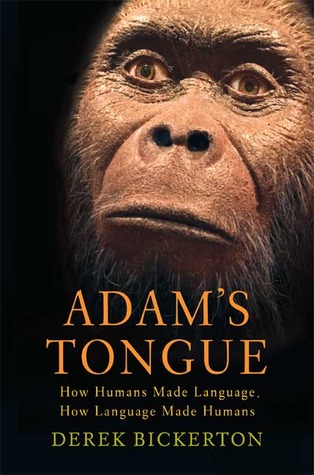
If you liked this article, you should probably also check these out:
